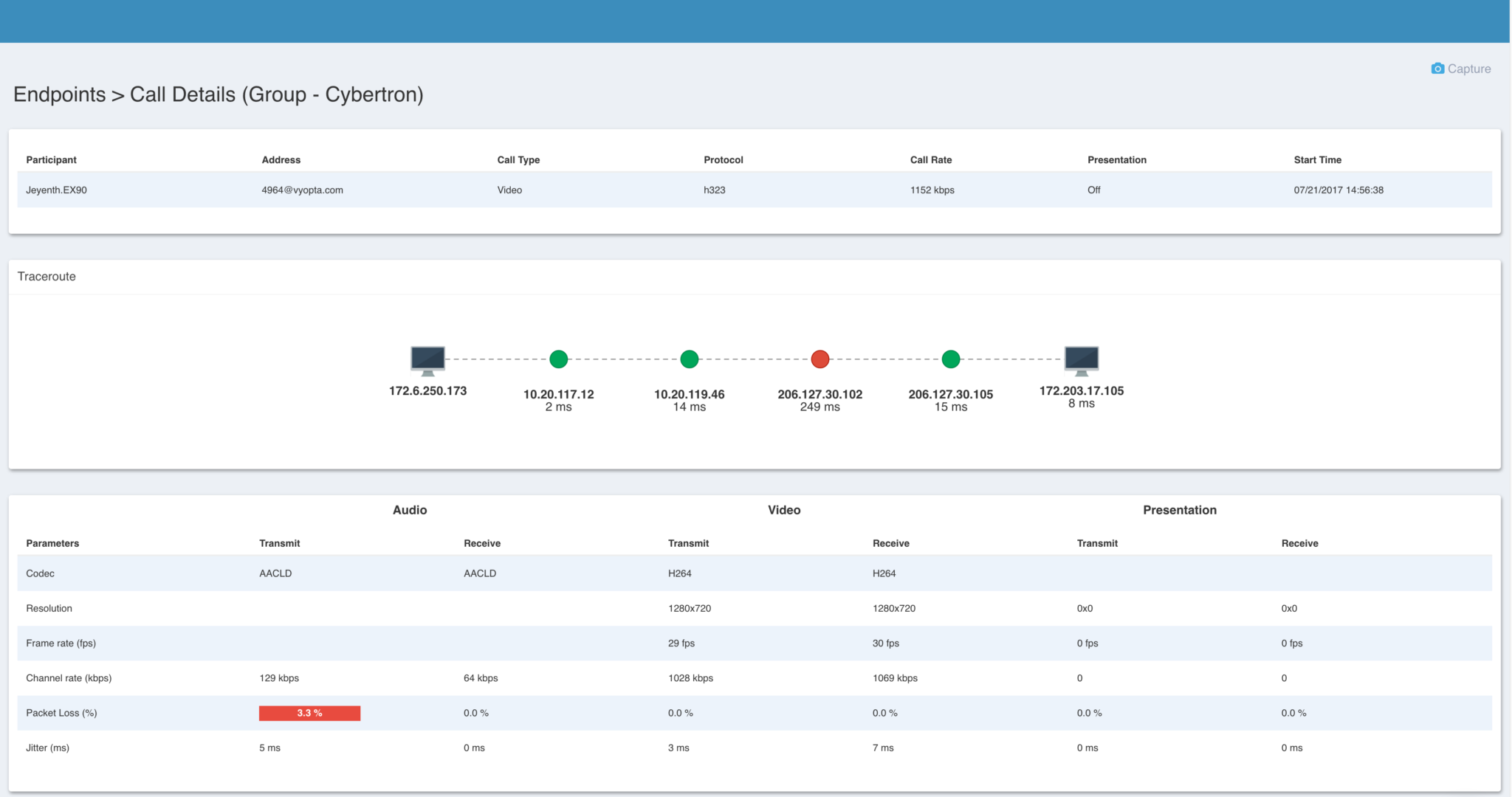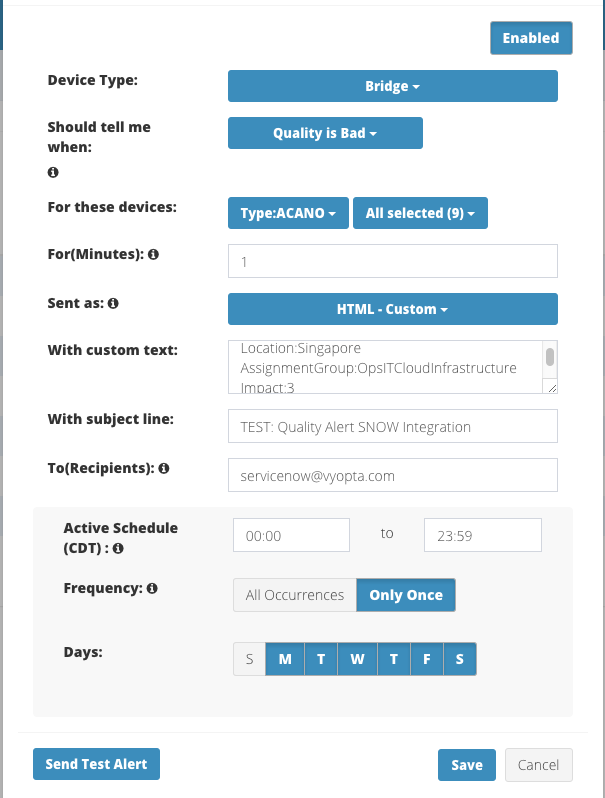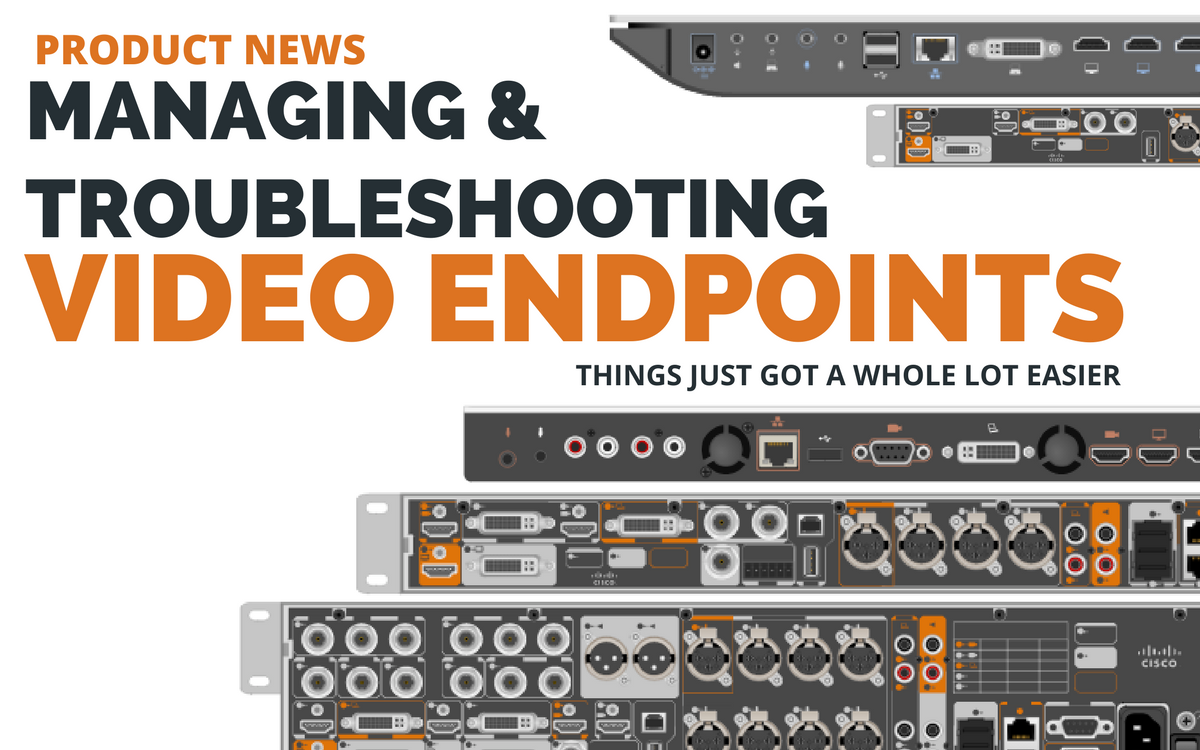
It’s Friday afternoon and you are getting up from your desk to head out to lunch when all of a sudden your red phone rings. This is not the normal desk phone you have that is dedicated to sales and marketing cold calls. This is the phone for high priority issues. For a minute, you transport yourself to that delicious cheeseburger that was waiting for you down the street, but the distressing ringtone quickly brings you back to reality. You pick up the phone and it’s your CIO. He is unhappy about a video conference he had with the Board of Directors. Bye bye cheeseburger, hello whatever is leftover in the break room. What if I told you it didn’t have to be this way? What if it were easy to troubleshoot a video call in three simple steps and a few clicks? At Vyopta, our goal is to get you back to your cheeseburger, get you home by 5 pm, or keep you focused on implementing new technologies instead of fixing old stuff. We have been working diligently to aggregate, analyze, and display call performance data so that you can find and fix video call problems in minutes instead of days or hours.
Step 1: Identifying bad calls

Creating an Intelligent Alert
Instead of receiving angry phone calls, now you can stay ahead of the game with a dashboard and alerts to help you immediately uncover bad calls, down endpoints, or disabled infrastructure. Many of our customers have already started putting this dashboard on a big screen in their office or NOC. Now, we know you can’t all sit around looking at a monitor and not everyone has a spare large screen in their space. So we have intelligent Alerts as well. This way you can set up alerts for conditions like bad call quality, your endpoint goes down, the camera or display is disconnected, or dozens of other conditions and you can set them up to contact you via email, SMS, or even through your pre-built workflows in your Helpdesk system of choice.
Step 2: Gathering relevant data
Once you become aware of the issue, the work really starts. More often than not, you can point to a user error or a simple network issue: Is it plugged in and does it work if you just restart the hardware? This usually covers a majority of problems. However, if it is a little more complicated than you have to spend some time gathering data. If you don’t have vAnalytics, you will go to the device and pull log files. You might also be able to pull network stats if the call happened very recently and you have access to a monitoring and performance tool. You may also go to the infrastructure (bridges, gateways) and pull log files. Then you are stuck trying to decode the cryptic error messages and status reports. If you can get quality data, then you have to try to match that up with the call in question. Vyopta does all this data matching for you. All the quality and status data is pulled from every source; endpoint, infrastructure, and gateway and it matched to the call so that it can all be viewed in one place. In addition, the live status information is delivered alongside the historical performance of the endpoint in question.

Endpoint Call Quality Details
Step 3: Root cause analysis (NEW! Call Path Analysis)
Now that you have all the data, it’s time to pin down what happened. There are many reasons why a call could fail, especially when you have technology from multiple vendors in your environment. Having multiple technologies involved in a call makes it much hard to connect the disparate sets of data. vAnalytics treats all data equally in that it collects, normalizes, and displays it all in a single view. By connecting the data, the problems usually reveal themselves pretty quickly.

Video Call Path Details
Here is an example where the Cisco Endpoint actually delivers traceroute data so that you can narrow down the particular node in the call path where the quality is falling. This is actually a new feature, Call Path Analysis. Read more about it here. Taking this quick screen capture to your network team usually makes quick work of the problem as they can spot configuration, VLAN, or QoS policy changes that may have impacted the call.

Video Call Performance Analytics
If you would like to find out how to quickly fix and reduce call failure and poor quality in your environment, then give us a call to receive a demo or trial of vAnalytics today. It will only take a few minutes! For existing customers, you have to download and install the latest version of our Data Collector to take advantage of this feature.


